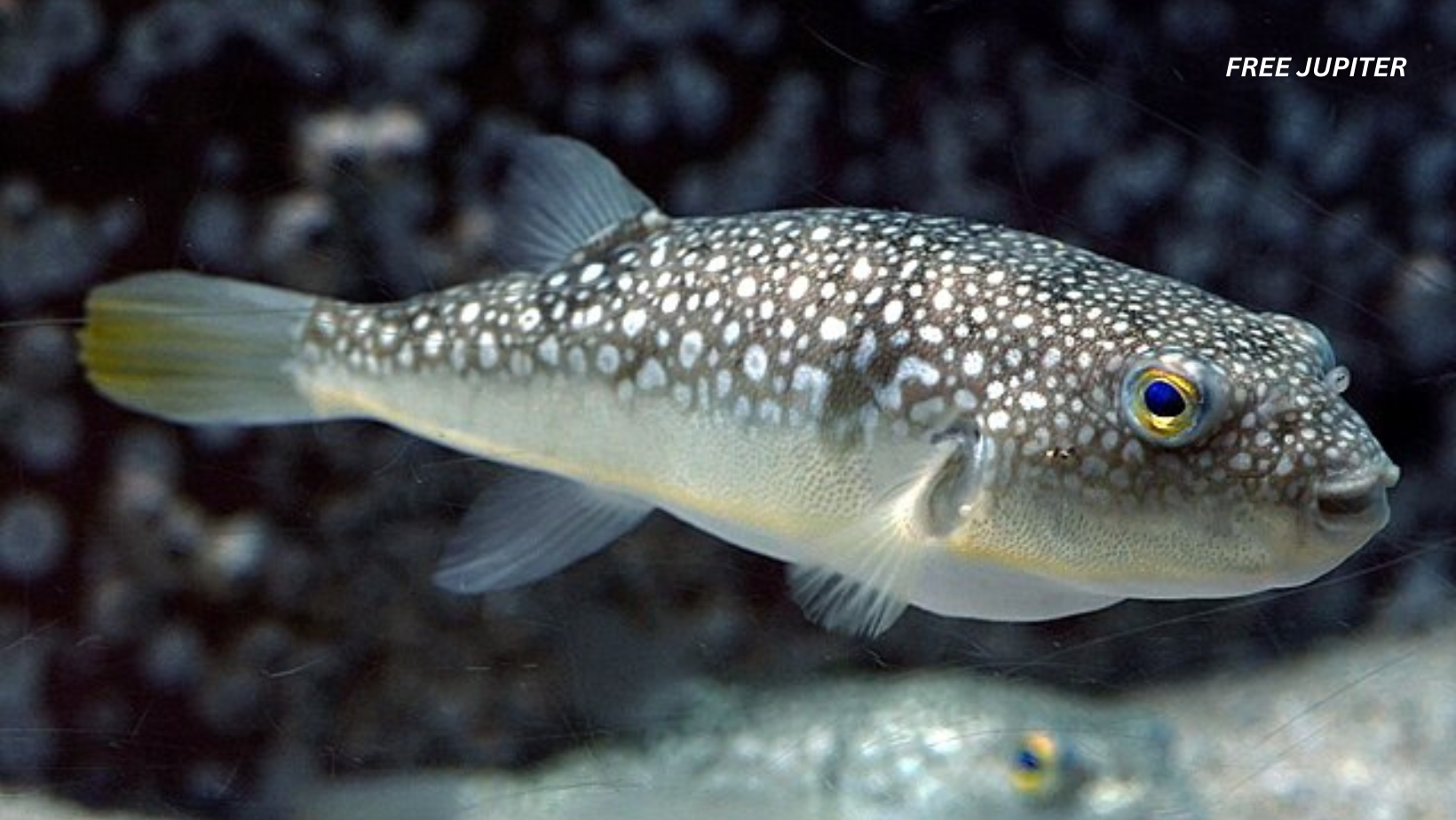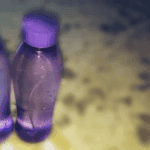Friendly Note: FreeJupiter.com shares general info for curious minds 🌟 Please fact-check all claims—and always check health matters with a professional 💙
In the warm coastal waters off southern Japan, divers once stumbled upon something utterly baffling—a series of massive, beautifully intricate circles pressed into the seabed. These weren’t simple rings. They had detailed ridges and radial symmetry, resembling alien crop circles or underwater mandalas. The mystery lingered for years: what could be carving these geometric works of art in the sand?
Eventually, the true artist was revealed. Not an alien. Not an undersea current. But a tiny fish with a flair for the dramatic—the male pufferfish.
A Tiny Fish with a Monumental Task
Measuring just around 12 centimeters (under 5 inches) in length, the male pufferfish doesn’t seem like an obvious candidate for creating large-scale underwater art. Yet, armed with nothing more than his fins, he spends days—sometimes a full week—meticulously sculpting the seabed into a nearly perfect, circular masterpiece.
These sand patterns can stretch nearly two meters in diameter and feature symmetrical ridges, valleys, and ornate details, often sprinkled with shells and bits of coral. It’s not just for show—it’s all for love.
Read more: Study Finds Female Frogs Literally Pretend to Be Dead to Avoid Mating With Males They Don’t Like
Courtship Through Geometry
In the world of pufferfish, creating art is more than a hobby—it’s a mating strategy. The nest-like structure serves as an elaborate invitation to any nearby females. The more precise and decorative the circle, the more likely it is to catch a female’s attention. This attention to detail becomes a direct reflection of the male’s fitness as a mate.
The female pufferfish doesn’t just look at the pattern from a distance—she inspects it. If she approves, she lays her eggs right in the center of the structure. Then she leaves, placing her trust (and her offspring) in the fins of the artist who built it.
Function Meets Aesthetics
These sand circles aren’t just a romantic gesture—they’re also biological engineering marvels.
The grooved ridges and spiral channels in the design help direct oxygen-rich water into the center of the nest. This provides a well-ventilated, safe environment for the eggs to develop. It’s like designing a nursery that also doubles as an art installation and a natural filtration system.
After the eggs are laid, the male remains to guard them—protecting the clutch from predators and ocean currents. Once the eggs hatch and the nest is no longer needed, the ocean gradually erases the design. And just like that, the artist begins again, reshaping the sand into a new love letter for his next potential partner.
Not the Only Artistic Fish in the Sea
Pufferfish may steal the show, but they’re far from the only creative romantics in the animal kingdom.
While the male pufferfish’s perfectly carved sand circles are undeniably impressive, they are just one example in a broader world of animal artistry—particularly when it comes to courtship. In fact, the animal kingdom is full of species that turn their quest for love into a performance, a display, or even a full-blown construction project. Let’s dive into a few other creative creatures that, like the pufferfish, blur the line between survival instincts and showmanship.
Bowerbirds: Forest Architects with an Eye for Interior Design
On dry land, thousands of kilometers from the pufferfish’s ocean gallery, the bowerbird has been making waves in the world of animal courtship for quite some time. Found mostly in Australia and New Guinea, male bowerbirds don’t sing or dance to win a mate—they build. But not nests. Instead, they construct elaborate “bowers”—special courtship structures made from sticks, carefully arranged on the forest floor.
What sets these bowers apart is their attention to aesthetics. Males go to great lengths to decorate their bowers with colorful objects like berries, feathers, flower petals, beetle shells, or even human-made items like bottle caps and plastic bits. Some species prefer a monochrome palette—such as all blue—while others arrange items by size or shape to create optical illusions. It’s less about practicality and more about style and flair.
The female bowerbird visits these bowers to judge not just their appearance, but also how well the male maintains and guards them. A sloppy or poorly curated bower? Instant rejection. A symmetrical, thoughtfully adorned masterpiece? That’s a love nest in the making.
Read more: Swarms of Fireflies Are Lighting Up Illinois Again—And Scientists Say There Is Hope
Cuttlefish: Underwater Chameleons with a Flair for Drama
If the pufferfish is an engineer and the bowerbird an architect, then cuttlefish are the performance artists of the sea. These soft-bodied relatives of squid and octopuses use their incredible skin to put on a show of lights and patterns during courtship—and the effects are nothing short of hypnotic.
Thanks to specialized skin cells called chromatophores, cuttlefish can rapidly change the color, texture, and even shape of their skin. During mating displays, males create pulsating waves of color that flash across their bodies like underwater neon signs. These visual signals can be used to deter rival males, attract females, or even mimic females in a clever bit of deception to sneak past competitors.
What makes cuttlefish particularly fascinating is their ability to match the behavior and appearance of their surroundings, making their courtship displays feel like part nature documentary, part magic show. And unlike the slow and steady labor of the pufferfish, cuttlefish courtship is all about split-second decisions and eye-catching spontaneity.
The Mystery of the Japanese Pufferfish: A Late Introduction to Science
Back to our original sea sculptor—the Japanese pufferfish, officially known as Torquigener albomaculosus. For years, the intricate patterns discovered on the seafloor off Amami-Oshima Island in southern Japan remained a marine mystery. Locals and divers noticed these structures as far back as the 1990s, but no one had seen the artist behind them.
It wasn’t until 2011, when underwater cameras captured the pufferfish in action, that scientists realized these delicate sand mandalas weren’t random at all. After further study, the species responsible was finally named and described in 2014—a surprisingly recent addition to marine biology.
The discovery served as a reminder that even in our modern, tech-savvy age, the oceans still hold secrets waiting to be uncovered. It also added a fresh chapter to the growing body of research showing how evolution can give rise to not only practical behaviors but expressive, artistic ones—especially when reproduction is on the line.
Art, Romance, and Evolution
At its core, the pufferfish’s behavior reveals something wonderfully universal—creativity as a language of attraction. From birds arranging leaves to fish shaping sand, the animal kingdom is full of creatures expressing desire through design.
And what makes the pufferfish especially captivating is the mathematical precision behind his designs. Research shows these patterns aren’t random; they follow consistent geometric principles, almost as if the fish were using a built-in compass. It’s a rare and stunning example of how biology and art intersect, and how even the smallest creatures can display behavior that borders on genius.
Read more: If You Kill One Dragonfly, You Are Responsible For Over 100 Mosquito Bites
A Love Story Etched in Sand
The story of the pufferfish’s sand circles is more than a quirky marine mystery—it’s a reminder that devotion takes many forms. Whether it’s a handwritten letter, a bouquet of flowers, or a perfectly sculpted underwater spiral, love can be expressed through effort, intention, and a touch of creativity.
And while we may never fully understand what drives this tiny fish to such aesthetic extremes, one thing is certain: the next time you think of romantic gestures, spare a thought for the little pufferfish who turns the ocean floor into art, one fin stroke at a time.










